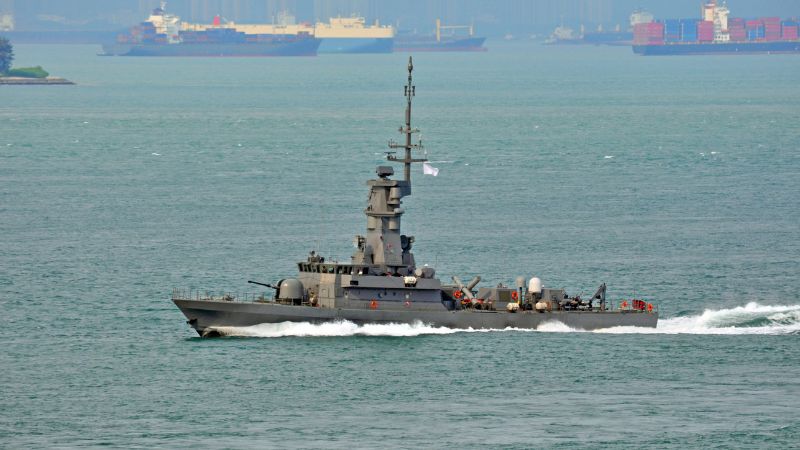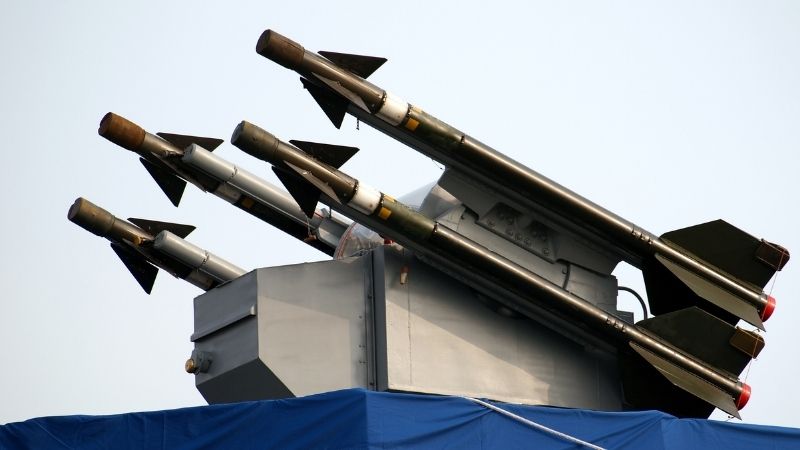Missile Vs Artillery: What’s the exact difference? (Table)
What’s the difference between an artillery shell and a missile? This is a question that often confuses people. The two weapons systems are very similar, but there are some key differences. In this blog post, we will discuss the differences between artillery and missiles, and explain which one is better for your needs.
The key differences between missile and artillery are range and accuracy. Missiles have a much longer range than artillery, and they are also much more accurate. This is because missiles are guided by GPS, while artillery shells are not.
Let’s explore these key differences in more detail.
Main differences between missile and artillery

As a general rule, missiles have a longer range than artillery. For example, the US Army’s M270 Multiple Launch Rocket System (MLRS) has a maximum range of 70 km, while the ATACMS Block II missile has a maximum range of 300 km.
Missiles are also more accurate than artillery. This is because missiles are guided by GPS, while artillery shells are not. Artillery shells can often fall up to 100 meters from the initial target, depending on the type of artillery, the skill of the gunner and the weather conditions.
Artillery shells are unguided, which means that they rely on the gunner to aim them correctly. This is difficult to do over long distances, which is why artillery has a lower accuracy than missiles.
Here is a comparison table to give you a short answer to your question, and sell all the differences at a glance:
| Artillery | Missile | |
|---|---|---|
| Range | Shorter. Less than 50 km in general. | Longer. Can easily be more than 100 km. Some intercontinental missiles have a range around 10,000 km. |
| Accuracy | Poor. Can be a 100 m radius. | Precise. Less than 10 m in general. |
| Guidance | Unguided | Guided via GPS |
| Technology | No major evolution | Constantly evolving |
| Cost | Cheap | Expensive |
| Launcher | Must be static | Can be a moving vehicle (aircraft for example) |
Missiles

Definition
A missile is a guided weapon that is propelled through the air towards a target. Missiles use a variety of guidance systems, including radar, infrared, and GPS, to direct them to their targets.
Missiles come in a variety of shapes and sizes and can be armed with a variety of payloads, including nuclear warheads.
Related: What is the Difference Between a Missile and a Rocket?
History
The first missiles were developed during World War II, but they saw limited use during the conflict. It was not until the Cold War that missiles became a key part of military strategy.
Today, missiles are an essential part of any military’s arsenal and are used for a variety of purposes, including air-to-air combat, ground-to-air defense, and precision strikes.
For example, the U.S. military’s Tomahawk missile is a long-range, precision-strike weapon that can be launched from land, sea, or air. It has been used in a variety of conflicts, including the Gulf War and the Iraq War.
Types of missiles
There are many different types of missiles, but the most common are:
- Air-to-air missiles: these are used by fighter jets to shoot down other aircraft.
- Air-to-ground missiles: these are used by aircraft to attack ground targets.
- Ground-to-air missiles: these are used by ground forces to defend against enemy aircraft.
- Ground-to-ground missiles: these are used by ground forces to attack enemy targets.
Artillery
According to Wikipedia, artillery is a class of heavy military ranged weapons that launch munitions far beyond the range and power of infantry firearms.
Artillery is one of the oldest forms of warfare, dating back to ancient times. Early artillery pieces were large and cumbersome, making them difficult to move and deploy on the battlefield. However, advances in technology and engineering have led to the development of smaller, more portable artillery pieces that can be easily deployed and used by troops in combat.

Artillery plays a vital role in modern warfare, providing troops with the ability to engage enemy targets at long range and inflict significant damage. Artillery pieces are typically mounted on vehicles or placed in static positions on the ground, and can be used to engage targets on land, at sea, or in the air.
Types of artillery
Artillery pieces are classified according to their range, caliber, and type of ammunition. The most common types of artillery pieces are howitzers, mortars, and guns.
- Howitzers are medium to long-range artillery pieces that fire shells at high trajectories, making them ideal for engaging enemy targets behind cover or in hard-to-reach places.
- Mortars are shorter-range artillery pieces that fire shells at lower trajectories, making them ideal for engaging enemy targets in close proximity.
- Guns are long-range artillery pieces that fire shells at high trajectories, making them ideal for engaging enemy targets at long range.
Advantages of artillery
- Artillery pieces are typically mounted on vehicles or placed in static positions on the ground, and can be used to engage targets on land, at sea, or in the air.
- Artillery plays a vital role in modern warfare, providing troops with the ability to engage enemy targets at long range and inflict significant damage.
- Artillery pieces are classified according to their range, caliber, and type of ammunition. The most common types of artillery pieces are howitzers, mortars, and guns.
If you like this article, here are a few more that you should read after that:






